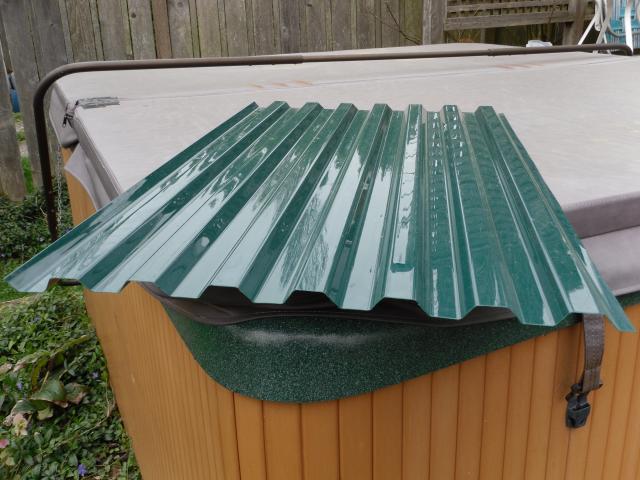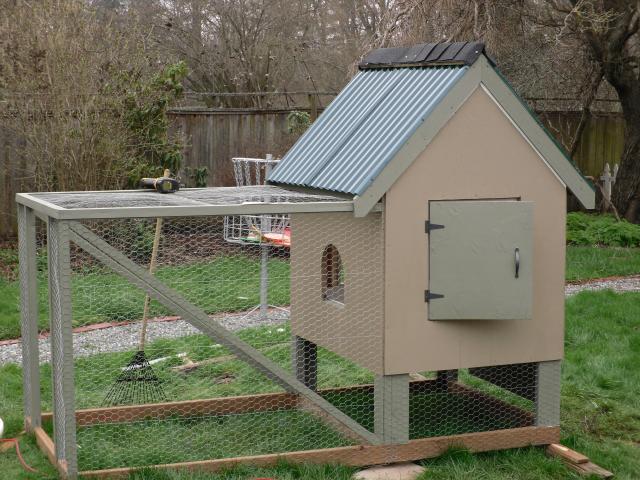I hate to say it but you have your suntuf installed incorrectly -- although because this is a tiny coop and the only exposed fasteners are over the wall, it will probably not be a big problem and at this point prolly best to just live with it. But what's meant to be done is to use the closure strip (it is NOT OPTIONAL, you HAVE TO use it to install the stuff right!) and then screw thru it through the *ribs*, not the valleys.
The problem with screwing through the valleys is that your roof will begin to leak over time. Although if you have also not followed the instruction about drilling the holes slightly too-large (which is ok in your case b/c the roof is very short, but would cause damage to the roofing over the next year if you had a normal size roof), and the holes are only "just" big enough for the screws, this may not be a major problem and in any case it's over a wall. If it were me I would just keep an eye on it as the years pass, to check for deterioration, but leave it be.
(You *have* used gasketed screws, yes?)
So, really the closure strip is not a choice, it is necessary to be able to screw through the ribs (which is necessary b/c of the oversized holes needed to accomodate the thermal movement of the panels)... but in your case, I would say it is probably reasonable to leave it off at this point. If you should decide you need to close it off in the winter you can retrofit something pretty easily, but realistically unless you are in a very windy site *and* NW Washington State gets colder than I am thinking it does, you may well be ok.
A more aesthetically-pleasing ridge cap could be made by one of two methods: you could get another piece of suntuf, cut an appropriate size piece (length of ridge x a foot or so wide) and bend it over and screw it on over the ridge, so the ribs run parallel to the ridge; or (my preference) get some L-shaped aluminum valley flashing and screw that on over the ridge. I would use the filler strips between ridge cap and suntuf to prevent wind/rain from blowing up under the ridge cap into the seam atop the roof, though.
Good luck, have fun,
Pat











